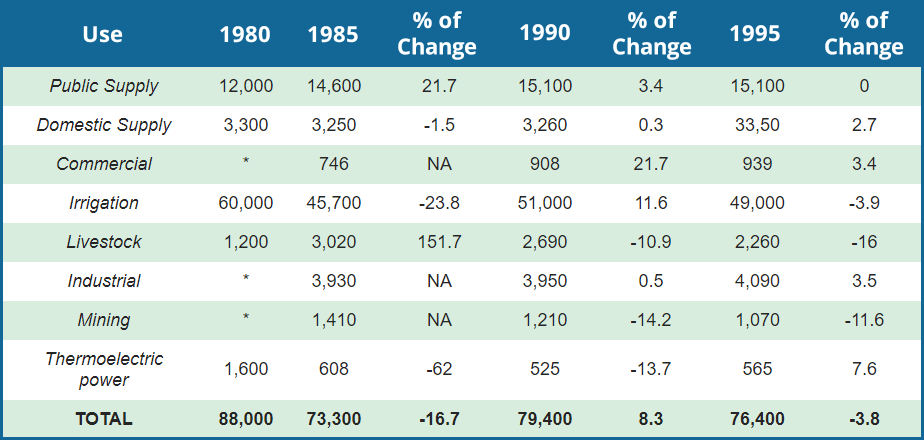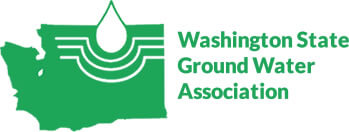
Drop In National Ground Water Usage
Not Matched By All End Uses
Total 1995 withdrawals of fresh ground water declined nearly 4 percent when compared to 1990 estimates, according to recent U.S. Geological Survey (USGS) data reviewed by the National Ground Water Association.
In 1995, total U.S. withdrawals of fresh ground water equaled 76.4 billion gallons a day, down three billion gallons from 1990, the new USGS report, Estimated Use of Water in the United States in 1995, finds. Not all end uses experienced declines, however.
Domestic supply (household use) was up 2.7 percent from 1990, commercial increased 3.4 percent, industrial rose 3.5 percent, and thermoelectric power usage jumped 7.6 percent. While public supply stayed even at 15.1 billion gallons a day (bgd), irrigation – the nation’s single biggest user of ground water at 49 bgd – declined 3.9 percent, livestock watering was down 176 percent and mining was down 11.6 percent.
Irrigation usage was 49 bgd, followed by public supply at 15.1 bgd, industrial at 4.09 bgd, domestic at 3.35 bgd, livestock at 2.26 bgd, mining at 1.07 bgd, commercial at 0.939 bgd, and thermoelectric power at 0.565 bgd.
Domestic, commercial and industrial uses in 1995 are the highest levels recorded in the 1980 to 1995 period, the study shows.
California remains atop the list of ground water states, withdrawing some 14.5 bgd. Texas follows it at 8.4, Nebraska at 6.2, Arkansas at 5.5, Florida at 4.3 and Kansas at 3.5.
Fresh Ground Water Withdrawals, by End Use
1980 – 1995
Millions of Gallons per Day

